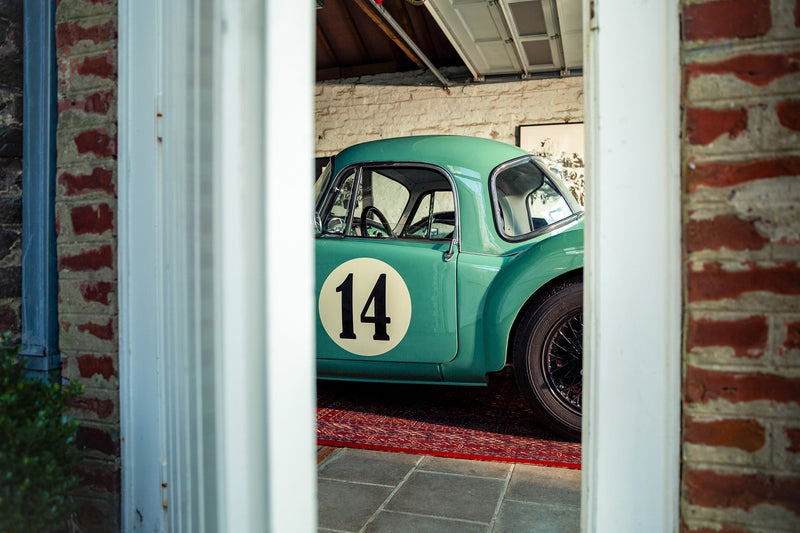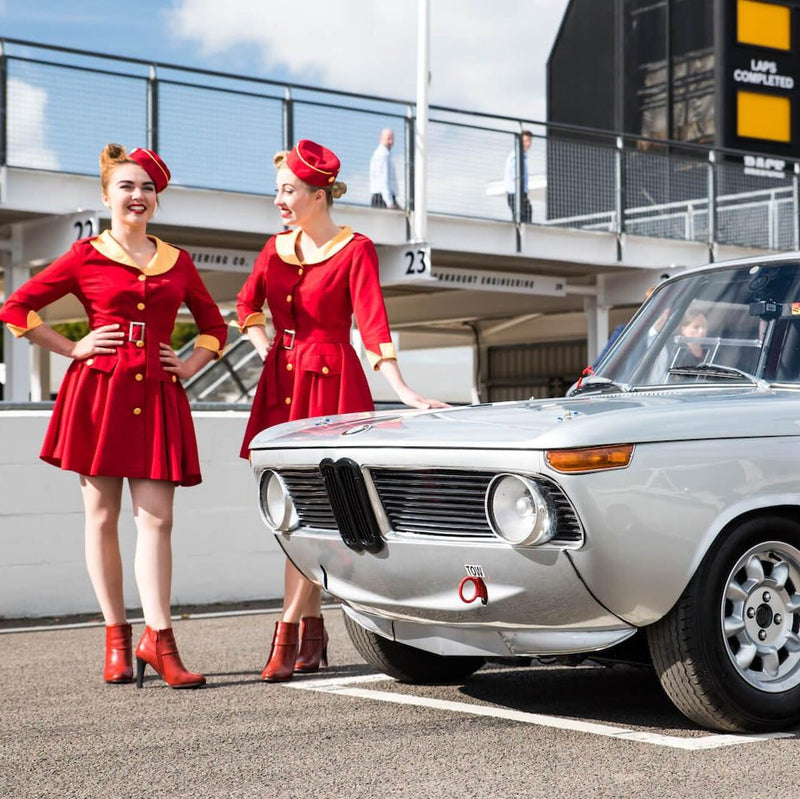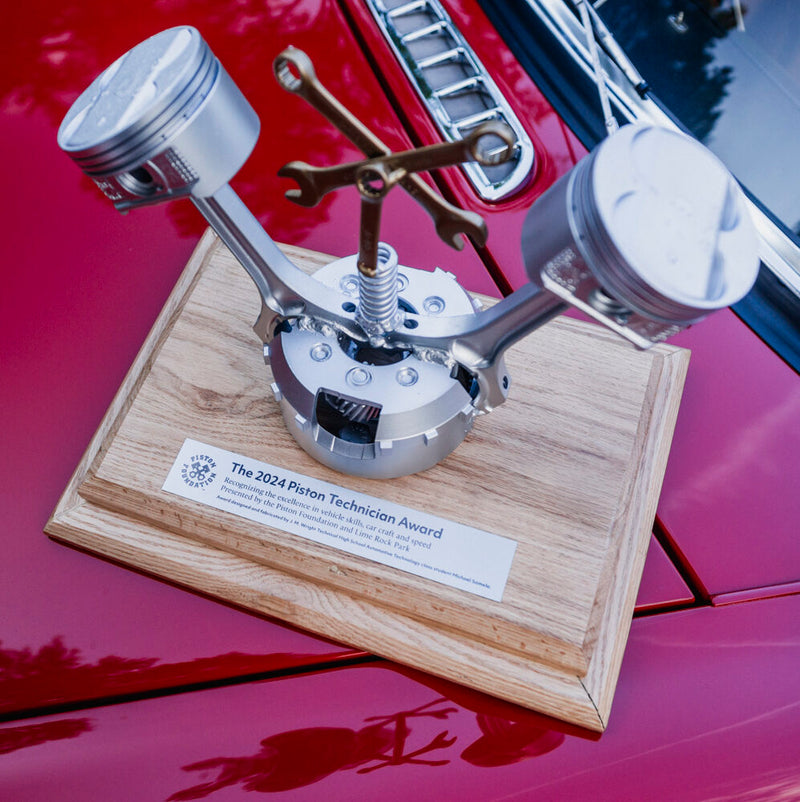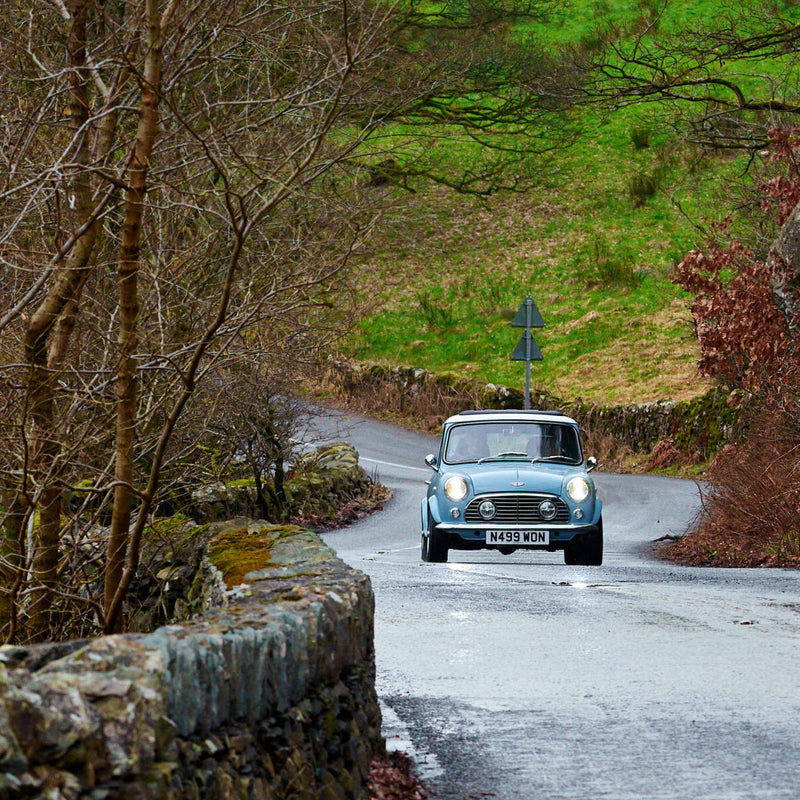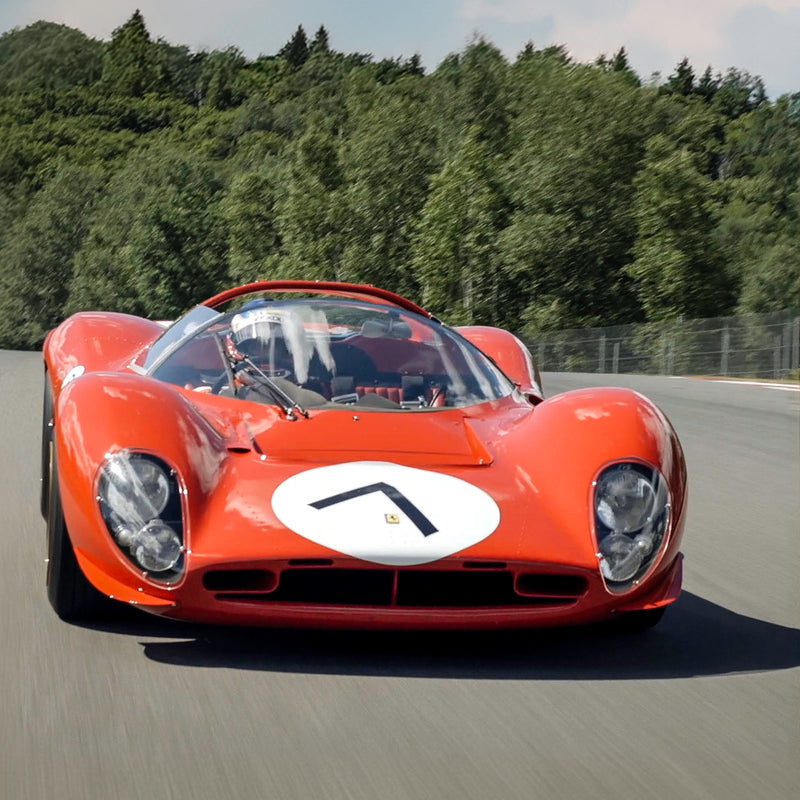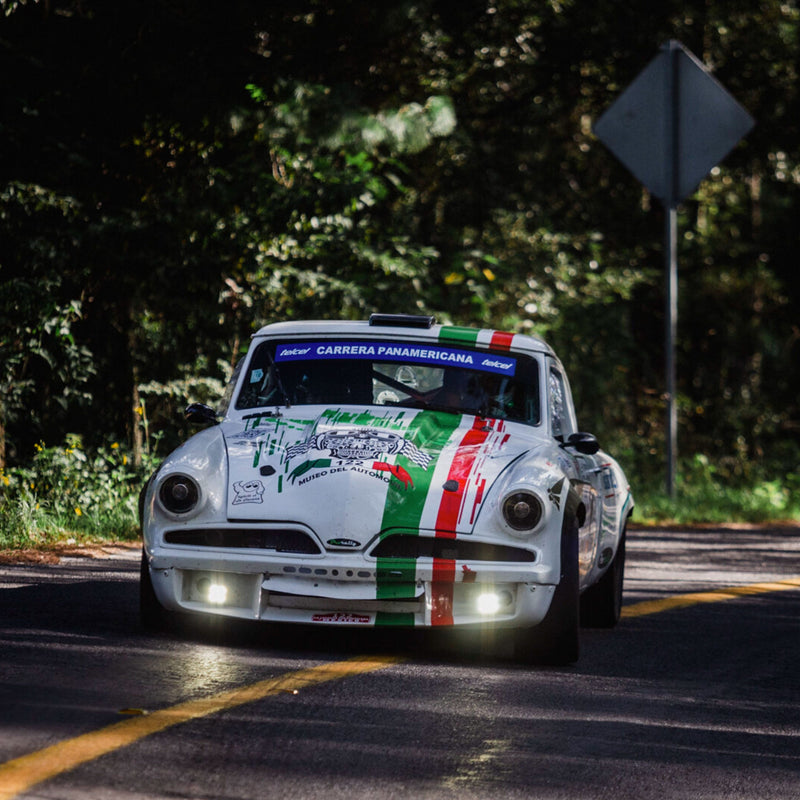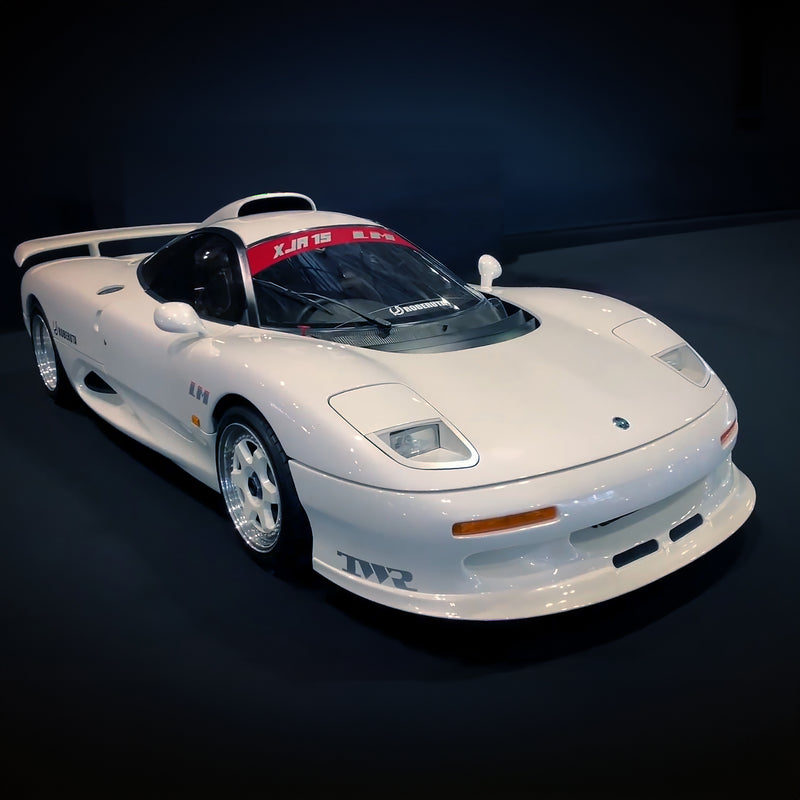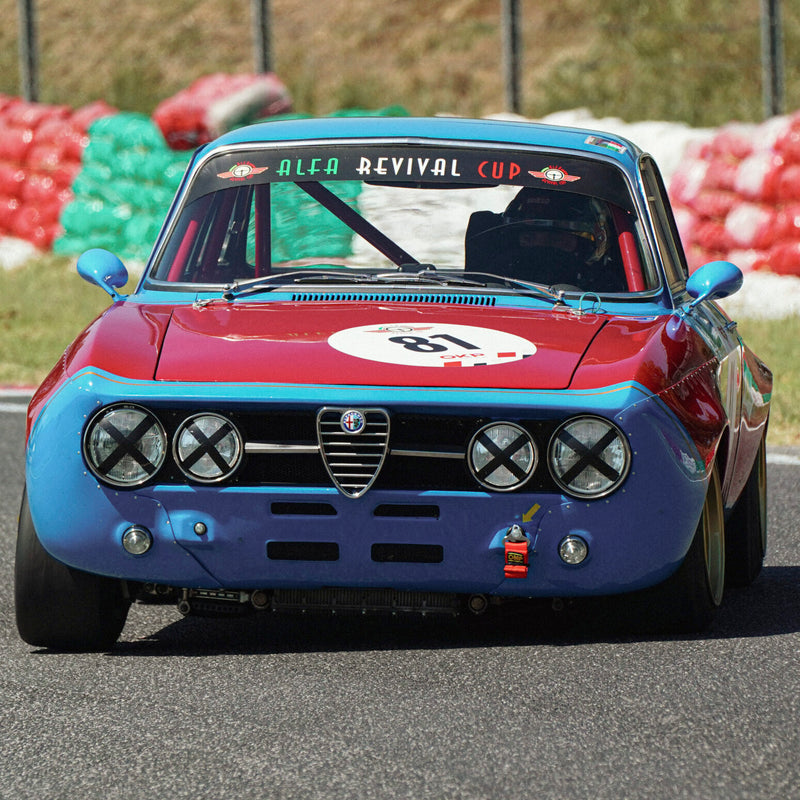But what of those races and/or moments that have slipped beneath the radar of a Hall of Fame career? For example, did you know…?







1) He’s one of only two men to have raced for McLaren and Ferrari in the same season
Ferrari vs. McLaren is a rivalry as synonymous with motorsport as Senna vs. Prost, Ford vs. Ferrari, and Porsche vs. pretty much everyone else at Le Mans. They rank 1st and 2nd respectively with the most Grand Prix starts (991, Ferrari; 863, McLaren), most wins (238; 182), podiums (582; 392), pole positions (993; 867), and fastest laps (254; 155) in F1 history. Only Williams’ ninth title in 1997 prevent Fiorano and Woking from being top dogs in the Constructors’ Championship standings as well.It shouldn’t come as too much of a surprise then that few drivers have had the opportunity to drive for both teams since 1966. Rarer still is a driver who has raced for both teams in the same season*, but Gilles Villeneuve did just that when he made hisFormula 1 debut in a third McLaren-entered MC23 at the 1977 British Grand Prix. It was a debut that set tongues wagging, given that Villeneuve posted the fastest time in Pre-Qualifing, lined up 9th on the grid two spots ahead ofMcLaren regular Jochen Mass, and, but for a needless pit stop to fix a faulty water temperature gauge, Villeneuve would likely have finished 4th . The rest as they say is history, and a legacy-creating career at Maranello was underway just six races later.


The other name on this list? Mr Maestro himself, Jacky Ickx, who bowed out of his fourth consecutive year atFerrari mid-way through 1973 after the scarlet team’s 312B proved too unreliable and uncompetitive against the mighty Lotus 72 and Tyrrell 006. Ensconced for a one-off drive with Yardley McLaren at the German Grand Prix, Ickx scored his only podium of that season at the Nürburgring before departing for a fresh start at Lotus in 1974.
*We should point out here, this refers to cars actually entered under the ‘McLaren’ and/or ‘Ferrari’ team name, rather than privateer or customer entries. We’re confident you’ll let us know in the comments section if we’ve missed someone.

2) An accident triggered by Villeneuve led to two deaths in Japan ‘77
So defined is Villeneuve’s F1 career withthat duel at Dijon with René Arnoux in 1979,that three-wheeled lap (read ‘lunacy’) at Zandvoort in 1979, andthat giant-killing performance at Jarama 1981 ahead of much, much stronger Grand Prix machinery (believe me, I could go on), it’s easy to forget that the French-Canadian’s second race donning the scarlet suit ended in tragedy.At the 1977 Japanese Grand Prix, Villeneuve, aboard the “awful” 312T2, could only better three cars in qualifying at Suzuka, and on the six lap, he badly misjudged his braking at the end of the start-finish straight, clattering into the back of Ronnie Peterson’s six-wheeled Tyrrell P34. Both Villeneuve and Peterson escaped relatively unscathed, but the impact sent the Ferrari soaring over the catch fencing and into the crowd, causing injuries to multiple spectators, and, tragically, the death of one marshall and a photographer standing nearby.
Formula 1’s most celebrated ‘fighter’ unquestionably deserves his due credit. Its’ often forgotten though that not all of his dices were heroic. Indeed, in the early stages of his career, they almost cost him his seat at Ferrari…

3) At first, McLaren didn’t want him, and Ferrari nearly fired him!
To say Villeneuve’s first foray intoFormula 1 was a difficult one is a masterpiece of understatement. Despite impressing on his Grand Prix debut at Silverstone (see point one), and even with McLaren’s James Hunt himself pressuring the team to sign the French-Canadian, quite incredibly, Villeneuve was passed over for a seat in 1978, then-McLaren team boss Teddy Meyer opting instead for the solid if unspectacular Patrick Tambay.Four months later, the French-Canadian, still a Formula Atlantic driver at this point, was finally gearing up for his second F1 start at Mosport, in a thirdFerrari to support team regular Carlos Reutemann and newly-crowned champion, Niki Lauda. All was not well between Lauda and Ferrari though. The former, still sore that the team had replaced him so quickly after his infamous Nürburgring shunt one year earlier, had already confirmed his departure to Brabham for 1978, and was monumentally pissed when his long-time race mechanic Ermanno Cuoghi, who was also set to join Brabham at season’s end, was benched midway through the United States Grand Prix at Watkin’s Glen. With the title already sewn up, Lauda walked away with two races to spare.
Suddenly Villeneuve’s Ferrari debut in a third car had become a Ferrari debut to replace the outgoing World Champion. Italy looked on expectantly. 17th on the grid following a crash in qualifying, plus multiple spins during the race whilst fighting for 8th , did little to appease the Italian press.
Following Japan ’77 (see above), an ominously dark cloud hung above the French-Canadian heading into 1978, and while 8th place in Argentina proved that development of the ill-handling 126T2 was going in the right direction, Villeneuve’s first four races all ended in retirement: Brazil, collision with Peterson (again!); South Africa, handling problems; Long Beach, crashed out from the lead; Monaco, crashed out in the tunnel. By the time Villeneuve scored his first points for the Scuderia with 4th place at Belgium, teammate Carlos Reutemann already had two wins and another podium to his name, and was only five points off the top spot in the standings. The next five rounds produced more duck eggs for Villeneuve before he finally took his maiden podium at that year’s Austrian Grand Prix, by which point his Argentine teammate had already taken another win. Unfathomable as it may seem, rumours were already starting to circulate that Villeneuve’s time at Ferrari might be numbered.
And speaking of which…



4) He nearly re-joined McLaren for 1982
In 1979, Jody Scheckter collected three wins and 60 points in total to secure the Drivers’ championship in his maiden season with Ferrari. Villeneuve, also on three wins, finished just four points adrift in 2nd , and the duo’s 113 combined points haul was enough to secure Ferrari its sixth Constructors’ Championship.1980 meanwhile was an absolute disaster. Neither reigning World Champion Scheckter nor ’79 runner-up Villeneuve came remotely close to win in 1980 – Scheckter failed to qualify full-stop for that year’s Canadian Grand Prix – and scored a pitiful two and six points respectively in the slow and unreliable 312T5. Reigning World Champion Ferrari dropped to 10th in the Constructors’ standings, way behind the all-conquering Williams FW07, and the South African was gone by year’s end.
1981 would see improvements with Ferrari’s brand new, turbocharged and Harvey Postlethwaite-designed 126C, Villeneuve proving its potential by winning twice in succession at Monaco and Jarama. Recurrent handling problems though meant the mood was still strained at Ferrari, and a frustrating Villeneuve caught the eye of newMcLaren boss, Ron Dennis. Indeed, though the French-Canadian was already under contract at Ferrari for 1982, ‘discussions’ between the pair began behind closed doors in Montreal. An initial offer of $2.5 million to return to Woking very quickly became $3.5m.
Ironically, just as his retirement had accelerated Villeneuve’s Ferrari status in 1977, so too did Niki Lauda’s F1 return in 1982 with McLaren scupper any chance of the French-Canadian’s move to Woking, discussions between Dennis and the then-two-time World Champion quickly picking up after a test session at Donington Park. Villeneuve thus went into his fifth full season with Ferrari in 1982, now aboard the heavily developed 126C.2 Championship contention looked on the cards, but was sadly not to be.

5) His helmet design featured in, arguably, the worst F1 debut of all time
Remember Andrea Moda? The team often considered the worst in F1 history after failing to pre-qualify for all but one of its 12 race entries, was turned away at the gates at Monza for “bringing the championship into disrepute”, and was later disbanded after its owner – Italian shoe designer Andrea Sassetti – was arrested on fraud charges?Among the most notable of the four drivers to ‘compete’ for the team that year – seriously, there’s enough for a full article – is Perry McCarthy, who would later go on to great prominence as the firstStig for BBC’s re-inventedTop Gear . Having arrived at the Brazilian Grand Prix only to find there was no car for him to drive (super licence issues also posed a problem), McCarthy made his actual F1 debut one round later in Barcelona. Fittingly for an Andrea Moda driver, the weekend began in farce as McCarthy overslept on the day of qualifying...
“Here I was in bed, on the other side of Barcelona, with no rental car,”The (future) Stig explains in his autobiography. “The only person who could have got washed and dressed faster was Superman. I ran downstairs to the foyer in a blind panic.
“Just as I thought I was finished, I got seriously lucky when Andrea’s brother walked through the main door. He’d just got back from some nightclub and looked like death but it was a total miracle. It was my only chance and we had 25 minutes to complete a journey that on a grand prix weekend could take over an hour. Halfway across town I needed another miracle, because I thought I was going to die. Andrea’s brother was now on a total mission to get me there on time. He was flat out at 90mph to 100mph through the city streets and going straight over red traffic lights at the same speed. I was numb with fear.”

Somehow, having made it to the Circuit de Barcelona-Catalunya in one piece but with shattered nerves, McCarthy’s day got even worse. After jumping into his S921, McCarthy had to wait while his mechanics attempted to coax some life into the woeful Judd V10 that had conked out behind him. They did so by spraying a highly combustible solution into the air intake, sending a fireball straight into the back of McCarthy’s head and, in particular, his new helmet design. One that paid tribute to the late Gilles Villeneuve, 10 years almost to the day that the French-Canadian had tragically passed away.
And, no, we’re still not done yet!
“I pulled out from the garage and drove on to the pit lane. I could see the track ahead of me and with a thrill of expectation I accelerated towards it. But as I crossed the white line marking the start of the circuit, the engine once again coughed, spluttered, stalled, and I slowly rolled to a halt. And that was it. My debut was finished. I couldn’t restart the car because there was no onboard ignition system and even though I was still close enough to talk to the team, they weren’t allowed to pull me back because I was officially on the circuit. All I could do was get out and stare back down the pit lane in disbelief.”
Unable to pre-qualify, McCarthy’s F1 debut had ended 20 metres from where it had begun. A decade on from his death, Gilles Villeneuve and his (slightly singed) helmet design had made F1 history all over again.
*Images courtesy of Motorsport Images, McLaren, Ferrari and Formula1.com. Quotes courtesy of Perry McCarthy.




